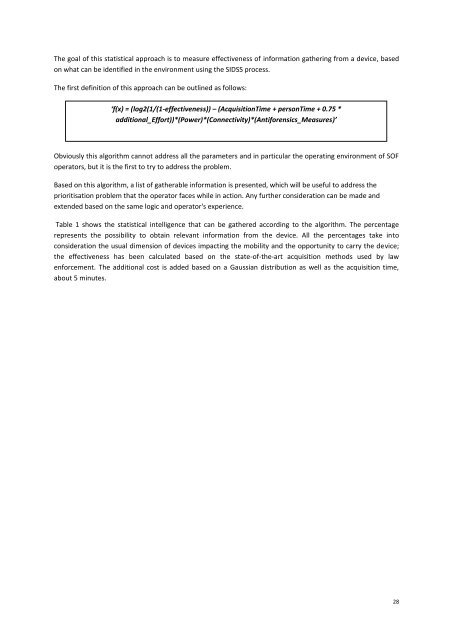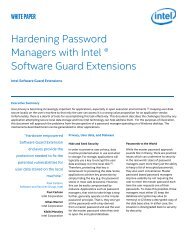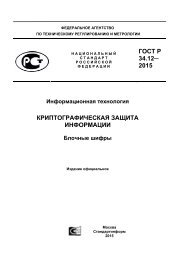BATTLEFIELD DIGITAL FORENSICS
BDF_Battlefield_Digital_Forensics_final
BDF_Battlefield_Digital_Forensics_final
Create successful ePaper yourself
Turn your PDF publications into a flip-book with our unique Google optimized e-Paper software.
The goal of this statistical approach is to measure effectiveness of information gathering from a device, based<br />
on what can be identified in the environment using the SIDSS process.<br />
The first definition of this approach can be outlined as follows:<br />
‘f(x) = (log2(1/(1-effectiveness)) – (AcquisitionTime + personTime + 0.75 *<br />
additional_Effort))*(Power)*(Connectivity)*(Antiforensics_Measures)’<br />
Obviously this algorithm cannot address all the parameters and in particular the operating environment of SOF<br />
operators, but it is the first to try to address the problem.<br />
Based on this algorithm, a list of gatherable information is presented, which will be useful to address the<br />
prioritisation problem that the operator faces while in action. Any further consideration can be made and<br />
extended based on the same logic and operator's experience.<br />
Table 1 shows the statistical intelligence that can be gathered according to the algorithm. The percentage<br />
represents the possibility to obtain relevant information from the device. All the percentages take into<br />
consideration the usual dimension of devices impacting the mobility and the opportunity to carry the device;<br />
the effectiveness has been calculated based on the state-of-the-art acquisition methods used by law<br />
enforcement. The additional cost is added based on a Gaussian distribution as well as the acquisition time,<br />
about 5 minutes.<br />
28





